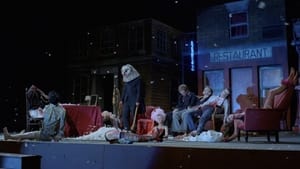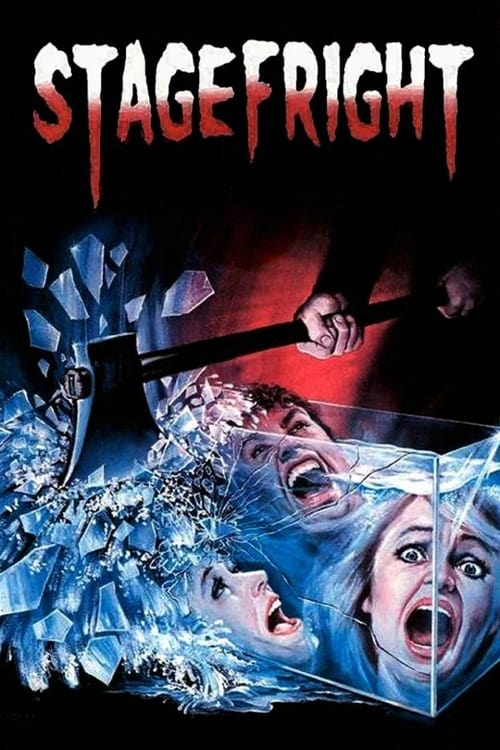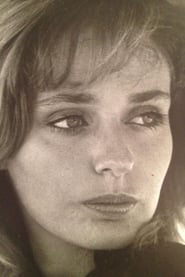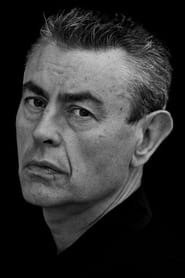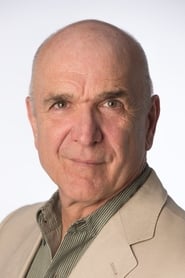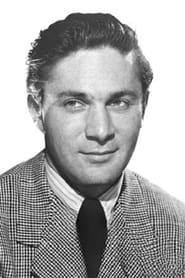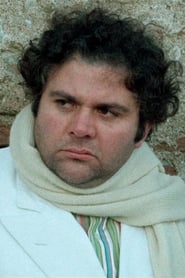Cast
View AllBarbara Cupisti
as Alicia
David Brandon
as Peter
Robert Gligorov
as Danny
Mary Sellers
as Laurel
Giovanni Lombardo Radice
as Brett
James Sampson
as Willy
Jo Ann Smith
as Sybil
Domenico Fiore
as Police Chief
Mickey Knox
as Old Cop
Michele Soavi
as Young Cop (uncredited)
Clain Parker
as Irving Wallace
Loredana Parrella
as Corinne
Martin Philips
as Mark
Ulrike Schwerk
as Betty
Piero Vida
as Ferrari
Crew
Director
- Michele Soavi
Producer
- Joe D'Amato
- Donatella Donati
Reviews
Wuchak
**_A mad slayer is loose in the theatre_**
A group of stage actors are burning the midnight oil during a storm in the hopes of producing a hit, but a homicidal former-actor has escaped the mental asylum and they’re locked in the theatre with him. David Brandon plays the stressed director and Robert Gligorov one of the actors.
"StageFright” (1987) is an Italian slasher, otherwise known as “Aquarius” and originally called “Deliria.” I was having trouble pinpointing the country of origin while viewing and so don’t let the fact that it’s an Italian production turn you away. It works just fine for English-speaking audiences and could’ve easily been shot in America, Canada or the UK.
The moody synth-oriented score is reminiscent of Pink Floyd with bits of more energetic 80’s music thrown in later on.
Barbara Cupisti (Alicia), Jo Ann Smith (Sybil), Loredana Parrella (Corinne) and Mary Sellers (Laurel) standout in the feminine department.
At the end of the day, it’s a perfectly competent slasher with a quality (one-dimensional) setting and the kills/gore are well done if that’s your thang (I could care less). But there’s not enough human interest and, considering the resources, the director coulda done better shooting the women more effectively (not talking ‘bout nudity or sleaze), but he does good enough I reckon.
The film runs 1 hour, 30 minutes, and was shot in Rome, Italy.
GRADE: B-
Nov 5, 2022
Thematic Analysis
This Horror film explores themes of fear and survival, delving into the psychological aspects of human nature when confronted with the unknown. Stage Fright presents a unique perspective on the horror genre by focusing on the psychological terror rather than relying on typical jump scares.
Director Michele Soavi brings their distinctive visual style to this film, continuing their exploration of themes seen in their previous works while adding new elements. Their approach to pacing and visual storytelling creates a viewing experience that rewards close attention.
Released in 1987, the film exists within a cultural context that now offers viewers historical perspective on the social issues of that era. Its reception demonstrates the diverse reactions to its artistic choices and its place in cinema history.
Did You Know?
- The production of Stage Fright took approximately 28 months from pre-production to final cut.
- With a budget of $1.0 million, the film represented a significant investment in bringing this story to the screen.
- The final cut of the film runs for 90 minutes, though the director's initial assembly was reportedly 127 minutes long.
- The costume department created over 289 unique costume pieces for the production.
- Several scenes were filmed in multiple locations to capture the perfect setting.
- The director insisted on using practical effects whenever possible, reserving CGI for only the most necessary scenes.
Historical Context
- In 1987, when this film was released:
- Personal computers were beginning to transform homes and workplaces.
- MTV launched, changing how music was marketed and consumed.
- Independent cinema was growing in influence, challenging the dominance of major studios.
How This Film Stands Out
While Stage Fright shares thematic elements with other films in its genre, it distinguishes itself through its unique approach to storytelling, visual style, and character development.
Unlike Hostel, which takes a more conventional approach to its subject matter, Stage Fright offers a fresh perspective through its innovative visual language and narrative structure.
While films like The Devil's Rejects and Death Machine explore similar territory, Stage Fright stands apart through its distinctive directorial vision and pacing.
This film's unique contribution to cinema lies in its bold artistic choices and willingness to challenge viewer expectations, making it a valuable addition to its genre.
Details
- Release Date: February 8, 1987
- Runtime: 1h 30m
- Budget: $1,000,000
Where to Watch


